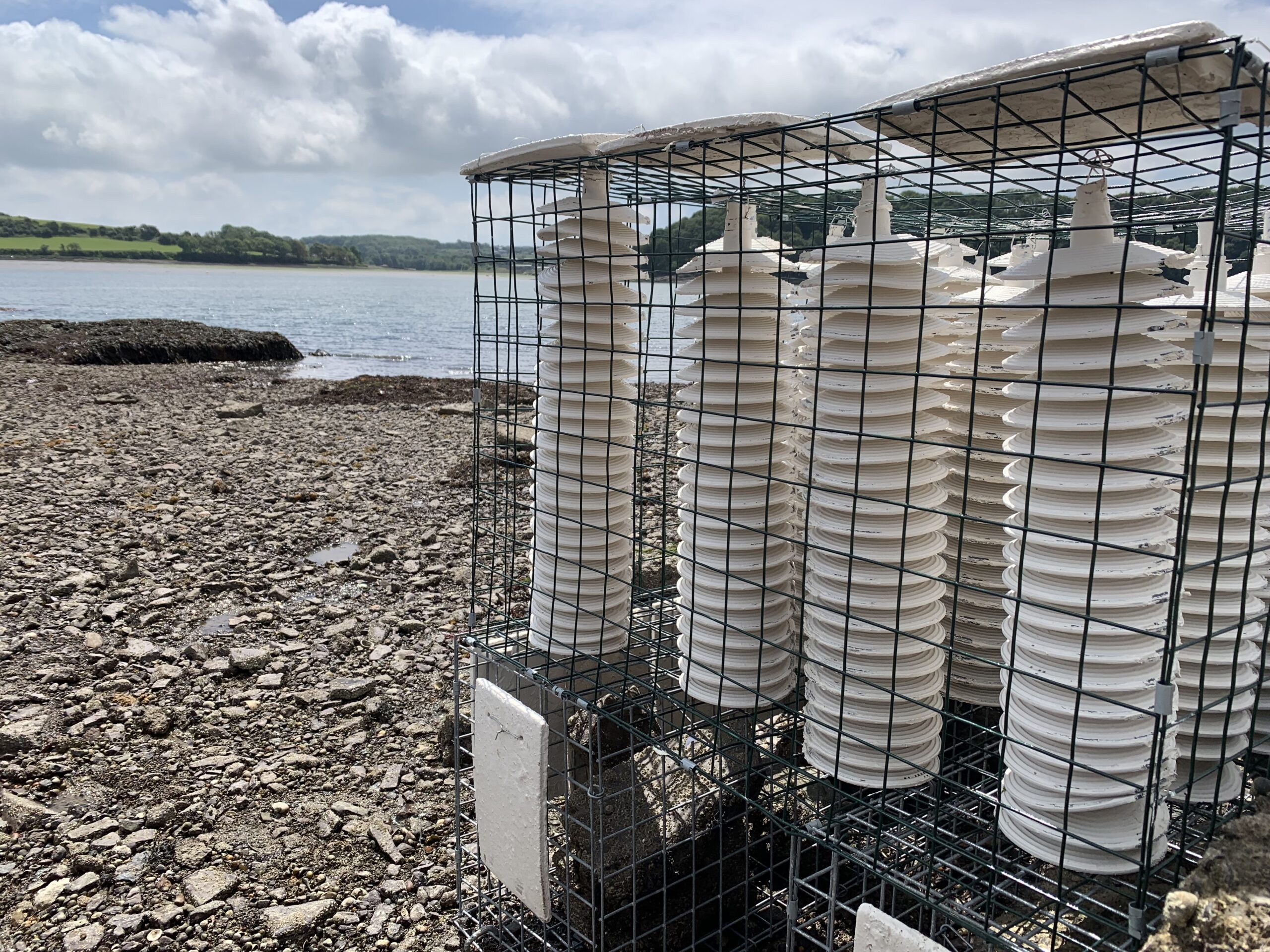Restoration hopes

An initiative aimed at reversing the decline of native oysters in Wales is under way
25,000 juvenile native oysters have been returned to waters in Milford Haven as part of a pioneering restoration project.
The native oyster (Ostrea edulis) is a species of Principal Importance in Wales, providing many benefits such as removing excess nutrients, stabilising sediment, and acting as an important habitat for other marine wildlife. Once widespread throughout Welsh waters, significant declines of oyster habitats over the last century, mean their benefits to the ocean have been lost.
Historic over-exploitation, changes in water quality, and disease are likely to have driven this decline. Unfortunately, these factors have left too few individuals in the wild to bring about natural population recovery.
The Wales Native Oyster Restoration Project, led by Natural Resources Wales and being undertaken with ABPmer, is a four-year Welsh Government funded pilot project investigating the feasibility of restoring the native oyster in the Milford Haven waterway.
Working with other marine scientists and aquaculture specialists, the team are using both current and former oyster habitats to test the possibility of introducing native oysters to boost the population. To date, the project has introduced around 25,000 juvenile oysters to the estuary across a number of restoration plots.
Oyster Restoration
Phase 1 established restoration plots with the aim of addressing fundamental site-specific questions relating to survivability, recruitment, density effects, the oyster disease Bonamia and non-native species. This phase is ongoing, with monitoring continuing over the next two years.
Phase 2 involved the laying of “cultch”, or clean shell material, which gives the oysters a better chance of survival, and encourages young oysters to settle. Monitoring of this phase was completed in March 2021. Results showed successful relay of oysters onto cultch material at two sites.
Spat Settlement
Phase 3 looked for evidence of reproduction and new oyster communities developing within Milford Haven. This phase was completed in September 2021.
ABPmer and NRW developed a spat settlement system to assess the level of spat settlement within Milford Haven, and to act as a baseline dataset for future studies.
Coupelles were covered in lime mix and fixed within elevated cages, to replicate spat collection methods used by the French aquaculture industry. Two cages were placed within Milford Haven in late July, just before the expected spawning season, and remained there for three months.
Anecdotal industry reports suggest that spat settlement within Milford Haven is currently poor. This was corroborated with project results which found only one native oyster spat on the system. Although the exact reasons for poor settlement on the system are unknown, it highlights the importance of on-going restoration projects to aid the recovery of native oyster populations.

Novel spat collection using coupelles
Next steps
Monitoring will continue to see how the oysters are surviving, growing, reproducing and if there is evidence of new communities.
The findings will be used to develop recommendations for wider-scale native oyster restoration in Wales and captured in a Wales Native Oyster Restoration Guidance document and related Native Oyster Action Plan.
This pioneering project is the first native oyster conservation project of its kind in Wales and if successful, could be used as a blueprint for large scale restoration projects, allowing native oysters to be reintroduced across Wales.
For more information about this project contact:
Vicky West (Marine Ecologist), (ABPmer),
Vicky.west@abpmer.co.uk 07816 545685


